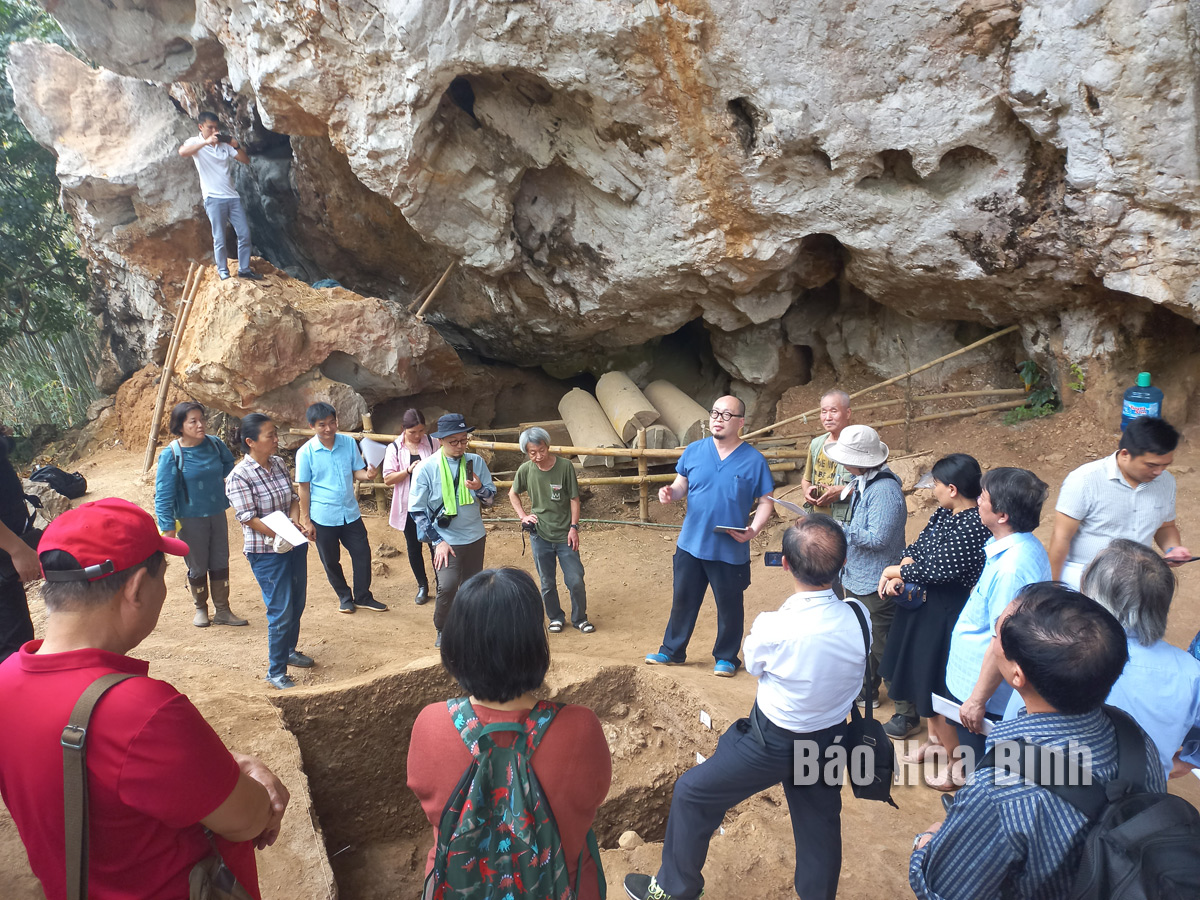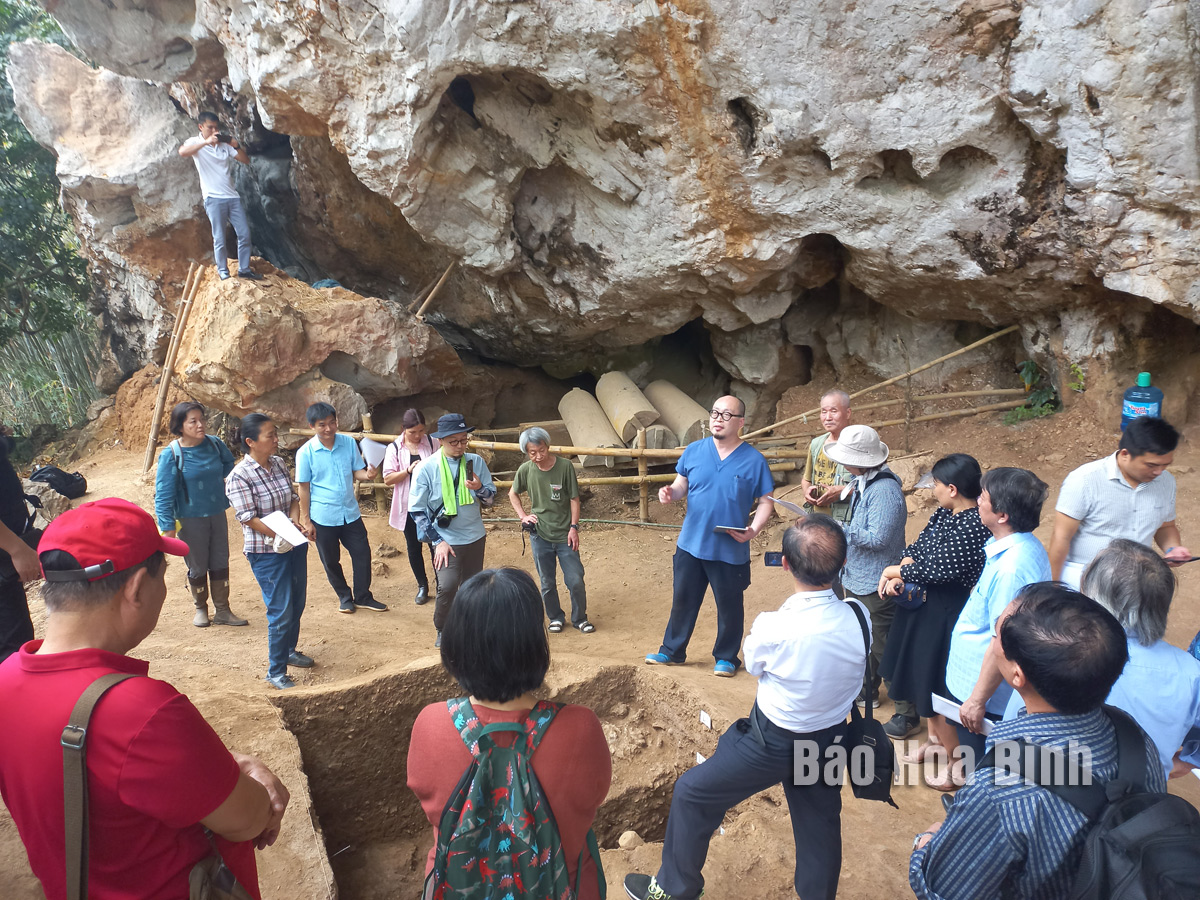
Nestled in the northwest, Hoa Binh province stands as a strategic gateway, connecting the bustling capital of Hanoi with the Red River Delta, north central and northeastern regions. Its unique location also links it to Upper Laos, making it a pivotal area for trade and cultural exchange.
Scientific studies and discoveries at the Phung Quyen cave site in Mai Hich communie, Mai Chau district, confirm that Hoa Binh was home to ancient Vietnamese people about 24,000 years ago.
Hoa Binh is synonymous with the globally renowned Hoa Binh culture, considered the cradle of ancient Vietnamese civilisation. This region is steeped in myths, folklore, and legends, offering a rich tapestry of ethnic festivals, cultural heritage, and traditional music. The sounds of gongs resonate through the landscape, and folk traditions and epic songs tell the stories of the Muong, Dao, Tay, Thai, Mong, and other ethnic groups who call this land home. The province is a cultural treasure trove that reflects the essence of Vietnam’s ethnic diversity and profound humanistic values.
Dr. Nguyen Viet, Director of the Southeast Asia Prehistory Centre, has conducted extensive studies on the area, confirming its significance as one of Vietnam's most archaeologically rich regions. Over the past century, both Vietnamese and foreign archaeologists have been captivated by the Hoa Binh culture, which remains a unique prehistoric marvel nearly a century after its global recognition in 1932.
Vietnam boasts over 130 sites related to the Hoa Binh culture, with the province itself home to 72 recognised and studied sites. The culture is closely linked to French archaeologist Dr. Madeleine Colani (1866-1943), whose early discoveries of prehistoric remains in Hoa Binh revealed the existence of a previously unknown culture of hunting and gathering.
Viet noted that among the Hoa Binh culture sites, the Xom Trai cave in Tan Lap commune, Lac Son district, is considered the most significant. This site is a prime example of the Hoa Binh culture in Vietnam and Southeast Asia. Recent studies indicate that this location dates back between 7,000 to 22,000 years.
In the spirit of "Party members go first, the people follow”, all households of Party members in the Doan Ket sub-region in Da Bac town, Da Bac district, voluntarily removed gates and fences, and donated land when the road expansion project passed through their properties. Inspired by their example, 68 households in the sub-region quickly followed suit, contributing over 1,400 sq.m of residential and perennial cropland to widen the main road through the residential area. The exemplary role of Party members in Doan Ket stands as a shining example of studying and following President Ho Chi Minh’s thought, morality, and lifestyle.
The Hoa Binh provincial People's Committee held a monthly meeting on May 29 to assess the implementation of socio-economic development tasks in the first six months of 2025, the progress of key projects, and some other important issues.
During his lifetime, President Ho Chi Minh always expressed his deep affection and special concern for children and youth. He once emphasized: "Caring for and educating children well is the responsibility of the entire Party and the entire people”; "First of all, the family (i.e. grandparents, parents, siblings) must do this job well”. "the Party Committees…, the Children’s Committee, the Youth Union, the education sector, and all related organizations must have specific plans to ensure children grow healthier and more progressive”. His teachings has been remaining valuable and serving as the guiding principles in the work of protecting, caring for, and educating children. In line with this ideology, Hoa Binh Province has continuously been prioritizing and investing resources in the well-being of children in recent years.
Mr. Nguyen Phi Long, the alternate Member of the Party Central Committee and Secretary of the Provincial Party Committee chaired the meeting of the Standing Committee of the Provincial Party Committee to provide opinions on several investment projects within the province. There was the attendance of Ms. Bui Thi Minh, the Permanent Deputy Secretary of the Provincial Party Committee and Chairwoman of the Provincial People’s Council; Mr. Bui Đuc Hinh, the Deputy Secretary of the Provincial Party Committee and Chairman of the Provincial People’s Committee and other members of the Standing Committee; the leaders from other departments, agencies, and some localities.
The Standing Board of the Vietnam Fatherland Front (VFF) Committee of Hoa Binh province held a meeting on May 28 to honour outstanding village elders, village heads, and reputable individuals from local ethnic minority and religious communities.
In mid-May, the provincial Museum organised an exhibition named "Duoi la co Dang Cong san Viet Nam quang vinh” (Under the flag of the glorious Communist Party of Vietnam). This meaningful activity took place in the joyful atmosphere to celebrate the country's major holidays and the Party congresses at all levels for the 2025-2030 term, towards the 14th National Party Congress.



